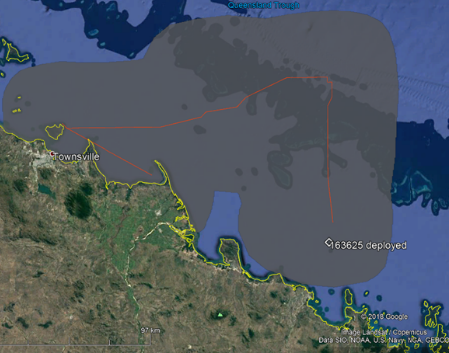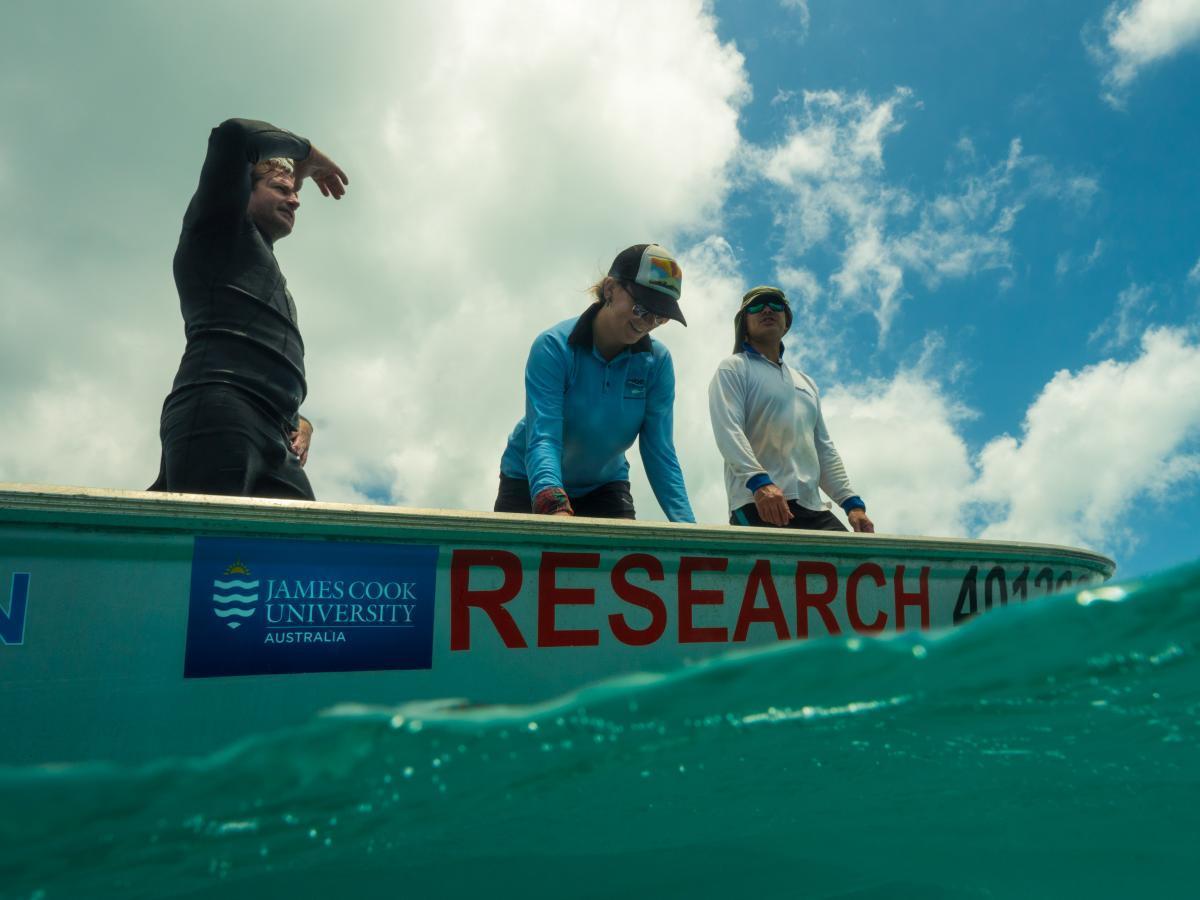March 9, 2019

A Hub team has tagged 14 hammerhead sharks with satellite tags to learn how the sharks move between Western Australia, the Northern Territory, the Torres Strait and Queensland, and Indonesia and Papua New Guinea.
Northern Australia has two species of large hammerhead sharks: the scalloped hammerhead and the great hammerhead. Scalloped hammerheads are ‘Conservation Dependent’ in Australia and recovery of the Australian stock may depend on whether, or the extent to which, it is fished in international waters.
Understanding the movements of both species, and how populations overlap, is essential to identifying threats and management actions.
Since December 2016, a Marine Biodiversity Hub team has been tagging and tracking hammerhead sharks to find out how the sharks are moving through northern Australian waters. The tagging team includes scientists from the Australian Institute of Marine Science, Western Australian Fisheries, Northern Territory Fisheries and James Cook University.
Commercial and charter fishers have been advising the team on where to find the sharks, and Indigenous rangers from the Girringun Aboriginal Corporation, Yuku Baja Muliku, and Yirrganydji Traditional Owners have joined some of the tagging expeditions in Queensland.
Fourteen hammerhead sharks, (six great and eight scalloped hammerheads; 10 males and four females), have been satellite-tagged so far. The sharks stayed reasonably close to the coastal tagging sites, with the furthest venturing 121 kilometres. This was a great hammerhead tagged off Bowen, Queensland, which moved north to Townsville and Palm Island.
Three hammerheads tracked for six months in Exmouth Gulf, Western Australia, all stayed in the Exmouth area. All the tagged animals were relatively small (about two metres), however, and larger animals may move larger distances.
Tagging only provides one type of information. The project has also collected genetic samples and analysed hammerhead parasites which can also be used to find out how hammerhead sharks move between regions. Some parasites only live in specific areas, so by comparing parasites on sharks, we can determine if different sharks are from different areas.
When combined, the tagging, genetic, and parasite data should show a more complete picture of how hammerheads are moving across northern Australia, and whether they move into Indonesia and Papua New Guinea.

Further reading
Fact sheet: Northern Australia hammerhead shark tagging program - update
- Log in to post comments
